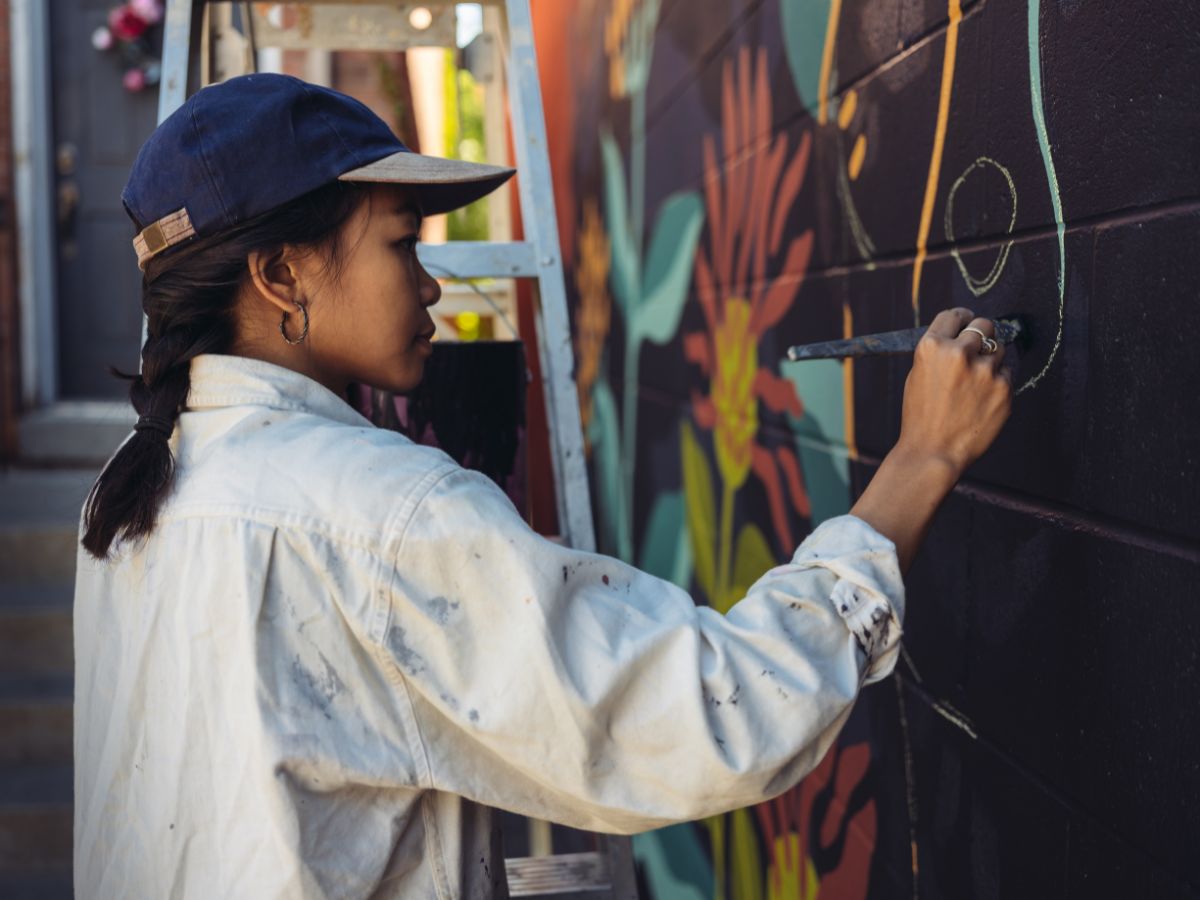
What Makes a Mural Successful?
Murals, as vibrant forms of public art, have the power to transform spaces, uplift communities, and create lasting impacts. But, not every mural achieves this level of success. So, what makes a mural stand out and resonate with its audience? Successful murals share a few key characteristics: community engagement, storytelling, cultural relevance, and strong visual impact.
1. Community Engagement and Participation
One of the most significant factors behind a successful mural is the involvement of the local community. Murals that reflect the culture, history, or aspirations of a neighborhood often create stronger emotional connections.
In Philadelphia’s Mural Arts Program, this approach has transformed how the city views public art. By involving residents, youth, and even inmates in the design and creation of murals, these projects foster community pride and social cohesion. This has led to noticeable improvements in neighborhood aesthetics, social trust, and perceptions of safety.
Similarly, Cincinnati’s ArtWorks program employs local youth to paint murals designed by professional artists. These murals not only beautify spaces but also serve as platforms for skill development and community building.
“We strive to be the economic engine that empowers creatives to transform our region,” said Tamara Harkavy, Founding Director of ArtWorks, in an interview.
When murals are created with community input and participation, they reflect the people they represent, which enhances their longevity and emotional impact.
2. Storytelling and Cultural Relevance
A successful mural tells a story, often one that reflects the values, struggles, or victories of a community. Murals like those in Oakland, California, often narrate the cultural history of the area, portraying local heroes or significant events.
For example, murals by artists like Dan Fontes—featuring striking images of animals or local icons—create a unique connection between the artwork and the people who pass by it daily. By including local stories into public spaces, these murals become symbols of identity and unity.
Incorporating local culture is also vital for murals. Whether it’s reflecting the cultural symbols of indigenous people or acknowledging the struggles of marginalized groups, murals that resonate with their surroundings are more likely to engage and inspire passersby.

3. Visual and Artistic Appeal
While the story and message behind a mural are crucial, so is its visual appeal. Strong use of color, composition, and scale make a mural eye-catching. Techniques such as trompe l’oeil (a visual illusion that tricks the eye) or using larger-than-life figures help to capture attention and make murals memorable.
Beyond visual aesthetics, the artwork must align with the space it inhabits, either through its design or in how it enhances the environment.
4. Sustainability and Maintenance
A mural’s success also depends on its durability and relevance over time. Weather-resistant materials, periodic restoration, and local commitment to maintaining the artwork are essential for its longevity. The Philadelphia Mural Arts Program, for instance, invests in preserving its murals to ensure they continue to serve the community for years.
Murals become successful not only because they beautify spaces but because they engage, reflect, and involve the communities they serve. When done thoughtfully, murals are powerful tools for storytelling, cultural preservation, and social cohesion.

